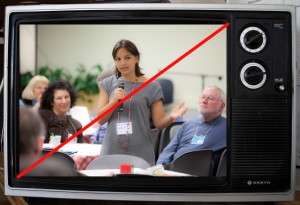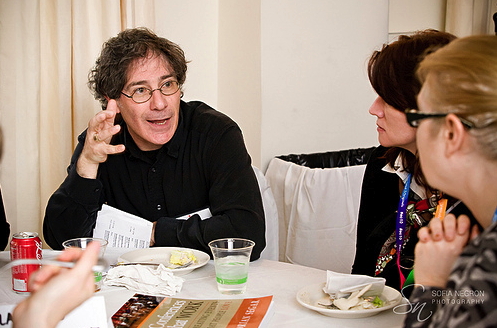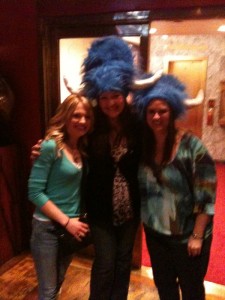Why The Revolution Will Not Be Televised

We’re concentrating on the face-to-face experience of the local audience at EC² for three reasons. Two of these factors are straightforward, while the third requires clarification.
The first reason is philosophical. The conference organizers—Traci Browne, Lindsey Rosenthal, and I—want to create an effective, uncomplicated event. Serving a remote audience well, as was done at the recent EventCamp Twin Cities, adds a significant level of complexity, not only to the organizer’s workload but also to the demands on presenters and the local audience to integrate the two audiences successfully.
The second reason is a matter of logistics. We three organizers enjoy busy professional lives, and possess a limited amount of time to make EC² the best conference we can. Creating an excellent remote audience experience (we wouldn’t be satisfied with anything less) would significantly shift our focus from other important components of EC².
The final reason is event design related and, perhaps, the most fundamental. The Conferences That Work design that we are using adds a default requirement of confidentiality to what happens during the conference. Let me explain what this means and why we’re doing this.
The thought of providing confidentiality at a conference may seem strange or counterproductive, especially these days where event sessions are routinely streamed and videoed for anyone who wants to watch. But in fact, there’s always been a need at some meetings for a commitment to confidentiality.
The classic example for a need for confidentiality is diplomatic meetings, where, to make best progress, participants need to be sure that what is said isn’t broadcast to the world. In this case, the reason for off-the-record conversation is to benefit relationships between the institutions that the diplomats represent.
But there’s another reason why confidentiality can be useful when people meet face to face; the personal benefit of the participants.
Perhaps the most well known example of events that provide this kind of environment are the 30 years of Renaissance Weekends, where participants “CEOs, venture capitalists, business & social entrepreneurs, Nobel Laureates & Pulitzer Prize-winners, astronauts & Olympians, acclaimed change-makers of Silicon Valley, Hollywood, Wall Street & Main Street, Republicans, Democrats & Independents” agree to the following policy:
All participants are expected to respect Renaissance Weekends®’ tradition of the candid and welcome exchange of diverse opinions, safeguards for privacy, confidentiality, and non-commerciality, and family ethos. Comments, behavior, or public references which could compromise the character of Renaissance Weekends® are unacceptable.
In my experience, all peer groups can benefit from this kind of environment. For example: more than once I’ve been told by different doctors I know that they regularly meet with a small group of their peers to confidentially discuss professional issues. In each case, the doctor I was talking with said, in effect, “There are some things that I can only talk about with other doctors.” The Conferences That Work format extends this kind of possibility to any peer group, and I believe that providing this opportunity can be important to any group of people with a common interest.
At every Conferences That Work event I’ve run, there are some sessions where the attendees decide not to share the proceedings publicly—in a few cases not even with other participants at the event. A common example is a frank discussion of the pros and cons of commercial tools and services available to attendees. And it’s not uncommon for a session or two to delve into work- or industry-related issues where attendees are looking for support and advice from their peers. Although these sessions are in a minority, it’s impossible to reliably predict in advance whether a specific session will turn out to require confidentiality.
All sessions at Conferences That Work have a recorder assigned to them, who makes notes or otherwise records the session. Because of the default requirement of confidentiality, unanimous agreement of the session’s attendees at the end of the session is needed for the recording to be made public.
In conclusion, it’s likely that the recordings of most of the sessions at EventCamp East Coast will be made available publicly, but they won’t be streamed live. So if you’re interested in fully experiencing EC², please join us on site in Philadelphia! I hope this article has explained why we’ve made these event design choices, and I welcome your comments and questions.


